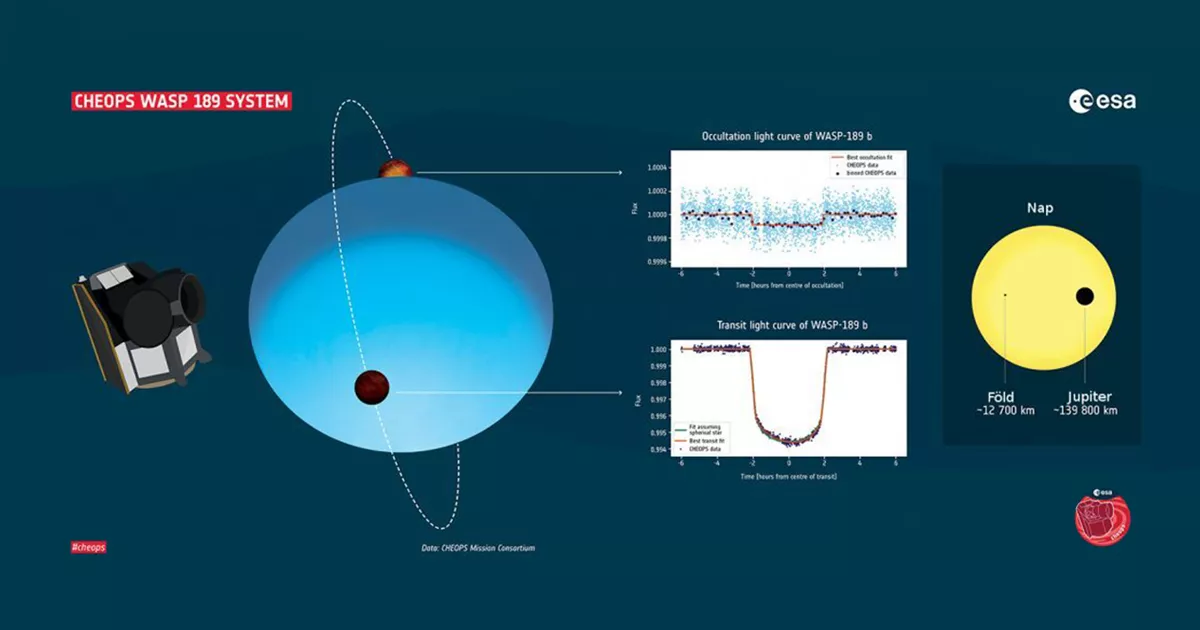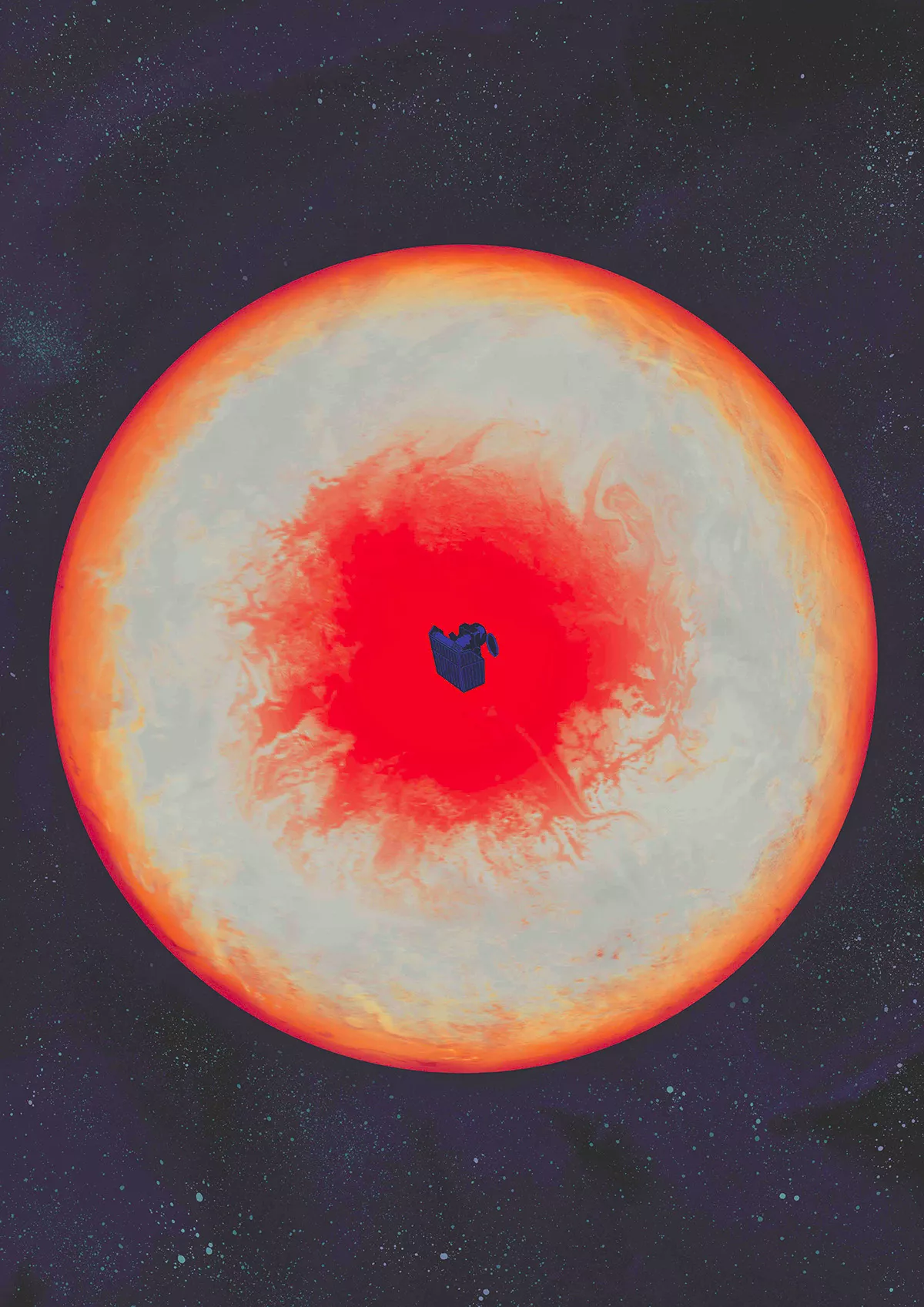The CHEOPS space telescope, constructed and operating under the auspices of the European Space Agency (ESA), began its scientific observations in the spring of 2020. Though the space telescope is primarily used to individually observe exoplanet systems that have already been identified, it is able to carry out more detailed examinations than before and more precise measurements.
The space telescope's first published result refers to WASP-189b, an ultra-hot, Jupiter-type exoplanet in very close orbit to an extremely hot star. The examination of planets orbiting hot stars is an important task because the emergence and development of the planetary systems around these planets unfolds completely differently to what we see in our own solar system, due to the large amount of radiation and rapid rotation. At the same time, very few planets have been identified that orbit a genuinely hot star.
There are currently approximately 4,500 confirmed exoplanets. On the list of their central stars, the hottest ones include pulsars and white dwarfs, with 'common' stars appearing further down. WASP-189 takes tenth place on this list, and is also the brightest, which means it is a typical representative of this particular category. The distance of its planet is only four and a half times the radius of the mother star, so the radiation in the atmosphere is enormous.
-

- The WASP-189 system. The geometry formed by the rotation of the star (left) explains the asymmetries of the light curve (center). To the right you can see the Sun, Jupiter, and Earth at a scale that matches the star and planet of the WASP-189 system (ESA)
With the help of the space telescope, it was possible to monitor the progress of the planet both in front of and behind the star. The light curve of the planet's passage in front of the star is asymmetrical due to the star's fast rotation. The shape of the rapidly rotating star is flattened out like a spinning top, causing the celestial body to be wider and cooler at its equator with bright spots at its poles. If you observe both the axis of rotation of the star and the planetary orbit from the side, it leads to an asymmetric brightness distribution, i.e. a light curve asymmetry, of the obscured star surface in its transit path. In this way, it is also possible to determine the mutual geometry of the star and the planet's orbit, which in the case of WASP-189b is a substantially perpendicular position. The planet's orbit is not in the equatorial plane we see in our Solar System, but instead passes over the star's poles. From an accurate examination of the light curve, and by analyzing the starlight reflected by the planet, it was effectively possible to show that the radiation falling on the planet increases above the poles.
Based on the planet's disappearance behind the star, it was also possible to accurately measure the size and temperature of the planet. WASP-189b always turns towards the star with the same side, so the temperature on the daytime side is very high, around 3,200 K, an exceptional temperature for a planet. At this temperature, all elements are in a molten state and most molecules decompose. The atmospheric processes that shape the climate of this inhospitable world are completely different to any celestial body found in the Solar System.
-

- Here we can see the planet WASP-189b from its star. In the middle is the silhouette of CHEOPS, which – also close to our imaginary point of view – looks as if it is revolving around WASP-189b (Frederik Peeters / David Ehrenreich)
The CHEOPS space telescope is still at the start of its mission, and we can expect to see more than 100 similar findings during its operational cycle.
The article on which the communication is based was published in the journal Astronomy & Astrophysics, the editor in chief of which is Monika Leindl (Observatoire de Genève, Université de Genève). The Hungarian researchers on the list are: László Kiss L., Director General of ELKH CSFK, and Tamás Bárczy, Managing Director of Admatis Kft., as Hungarian members of the CHEOPS Science Board; as a Hungarian member of the Science Team, Gyula Szabó M., GAO Director of Eötvös Loránd University and Attila Simon (Physikalisches Institut, Universität Bern), and Szilárd Csizmadia (DLR, Berlin) as the second author of the article.
Source: “The hot dayside and asymmetric transit of WASP-189 b seen by CHEOPS“